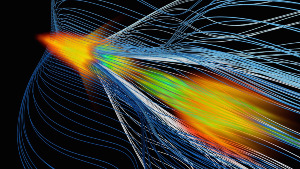
Have you ever heard of antimatter? Antimatter is composed of antiparticles such as antiprotons, antineutrons and positrons. These particles have the same mass as normal matter but have opposite charge and properties.
The reason it is called antimatter is because the subatomic particles in antimatter are the opposite of the particles in normal matter. Matter is made up of atoms, which have a nucleus, containing positive electrical charge protons, neutral electrical charge neutrons, and negative electrical charge electrons which orbit around the nucleus. Antimatter is made up of antiparticles which are particles whose original charge is reversed. Since antimatter is the opposite of matter, when the two come in contact, they destroy each other in a burst of energy.
Physicists believe that shortly after the Big Bang, there were equal amounts of antimatter and matter. But, astronomers have so far been unable to detect antimatter anywhere in the universe. No one knows why antimatter is now very scarce by comparison to matter.
Antimatter particles have been generated and studied at particle accelerators, like the Large Hadron Collider, operated by the European Organization for Nuclear Research. Antimatter is not the same as antigravity, and scientists theorize that gravity will affect antimatter and matter in the same way.
What scientists know about antimatter only scratches the surface of this mysterious substance. There is so much more to learn.
[Sources:
Livescience.com
;
NASA
]

